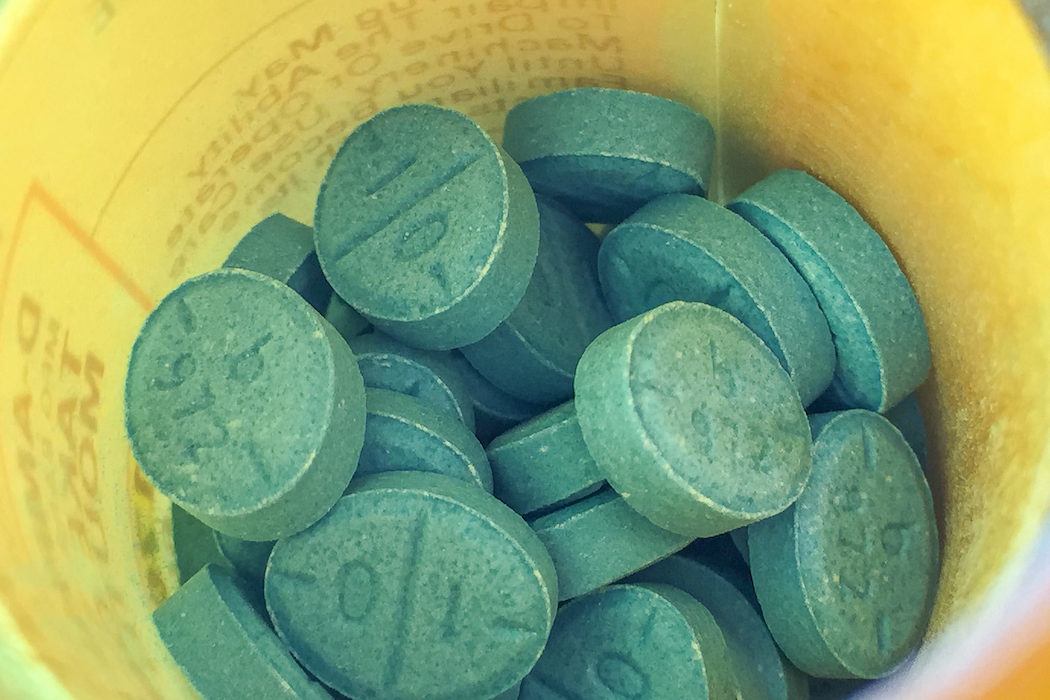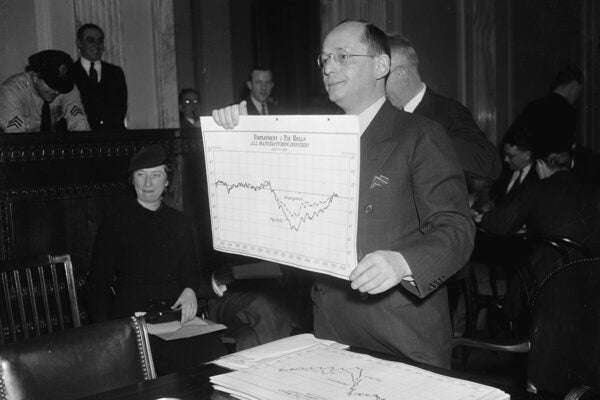America’s workforce runs on amphetamines.
More specifically, it runs on Adderall (dextroamphetamine), Vyvanse (lisdexamfetamine), Focalin (dexmethylphenidate), and Concerta (methylphenidate), all commonly used to treat attention-deficit/hyperactivity disorder. Over the past five years, reports of a growing amphetamine epidemic in the United States have surfaced in unlikely places: From gym rats to Hollywood actresses to fearful college kids and stressed writers, there’s been no lack of exposés and personal interviews on the country’s prescription amphetamine and methamphetamine users.
Yet of all the reports, some of the most disturbing have been those chronicling the use of ADHD drugs to keep up in the workplace. Abuse by young professionals is distressingly common—Wall Street traders, software engineers, dentists, nurses, and lawyers, all cracked out of their minds trying to keep up with the competition. Some have even died from mixing these drugs with alcohol. While the exact number of abusers is hard to trace, as of 2015, the ADHD drug industry was a $13 billion business, and a report by IBISWorld expects to see the industry grow to $17.5 billion by 2020. To put that number in perspective, coffee, America’s best-known stimulant, brings in $30 billion annually.
ADHD wasn’t even considered a diagnosis for the adult population until after 2006, when the American Journal of Psychiatry published a study claiming that 4.4 percent of the U.S. adult population had ADHD. That opened the floodgates for adult use of ADHD drugs. More ADHD diagnoses translated to more ADHD prescriptions, causing a 53 percent increase in those prescriptions from 2008 to 2012, according to the New York Times. In 2013, the National Survey of Drug Use and Health, around 10 percent of adult Americans admit to using prescription stimulants at some point in their lives.
Some addiction advocates have pointed to pharmaceutical companies’ adept marketing of ADHD drugs to consumers as a cause of the increase in ADHD diagnoses, but the flow of prescriptions shows no signs of slowing. However, it is becoming harder and harder to deny the dangers associated with uppers and their prevalence in American society, especially among adults. According to a 2013 report by the Substance Abuse and Mental Health Services Administration (SAMHSA), emergency room visits caused by misuse of ADHD stimulant medications more than doubled from 2005 to 2010, with a significant increase for people over the age of 18. ADHD drug abuse had become so commonplace on college campuses that Wesleyan University, among other prominent institutions, has tried to ban it altogether.
* * *
Contemporary reports tend to talk about the use of uppers in the workforce as if it were new territory. However, these drugs have been accompanying Americans to work for many years now. Stimulant drugs, it seems, have often powered someone else’s interests at the expense of the user’s body and mind.
Our story starts in New Orleans, late 1880s. As historian David Courtwright explains in the Journal of Southern History, New Orleans dockworkers often labored for up to 70 hours at a time, loading and unloading cargo from the steamboats that constantly rolled into the bustling port. What kept them going was cocaine. It’s not known how the dock workers found out about the superhuman effects of cocaine, says Courtwright, but the habit soon spread across the South to workers in similarly strenuous jobs—those located on cotton plantations, in railroad work camps, and at levee construction sites. These posts were filled almost exclusively by former slaves.
Slavery, of course, was the backbone of the Southern economy before the Civil War, but slavery-like conditions persisted long after the war, writes economist Jay R. Mandle. In the wake of several coke-fueled incidents of violence in the South, the drug came be to regarded as a danger associated with blacks, prompting the infamous and sensationalist New York Times headline: “Negro Cocaine Fiends Are a New Southern Menace.”
As soon as cocaine had swept the nation, the Harrison Narcotics Tax Act came in to take it away. By 1914, the government’s strict regulation of cocaine had made it an expensive black market drug, out of the price range of its usual users. Racial tensions—fears of the “cocaine-crazed negro”—were largely responsible for the swift and strict approach to regulation.
It wouldn’t take long before another stimulant appeared. Synthesized in 1929, the amphetamine Benzedrine quickly became America’s first choice to put some pep in its step and add some creativity to its coffee. Lovingly referred to by users as “bennies,” Benzedrine abuse skyrocketed in post-WWI America. By the late 1960s, Benzedrine sulfate production ranged from 8 to 10 billion tablets a year.
The Beats’ use of Benzedrine might be the most romanticized and well-known story of amphetamine misuse, with both Jack Kerouac and Allen Ginsberg praising the ethereal consciousness they discovered by cracking open over-the-counter inhalers. In fact, bennies and the creative process went hand in hand for Kerouac, providing the inspiration and drive for his masterwork, On the Road. Other famous creatives and intellectuals of the day had some pretty raging habits as well. Poet W.H. Auden and conservative go-to philosopher Ayn Rand couldn’t work without their daily doses of amphetamines.
Amphetamines weren’t only for the leading intellectuals of the day. In his essay, “America’s First Amphetamine Epidemic, 1929-1971,” historian Nicolas Rasmussen finds that, during the height of the epidemic in the early 1960s, the U.S. was producing 80,000 kilograms of amphetamine salts per year. Each person in the U.S. would have to consume 43 ten-milligram doses of amphetamine to deplete a supply of that amount. Rasmussen explains that this copious consumption was driven by American perceptions of amphetamines as something of a panacea, a “one-stop shop” for their ailments. Amphetamines were used as antidepressants, for weight loss, and even for “problem children”—before ADHD became a household name.
Although around 85 percent of amphetamine prescriptions were written for women aged 36 to 45, commercial truck drivers also developed major amphetamine habits, fueled by long hours and lonely roads. Of the 8 to 10 billion pills manufactured each year, about half went unaccounted for, some of which was due to the clandestine trade truck drivers had with pharmacists.
That was until authorities started to catch on. In the 1950s, commercial truck drivers’ amphetamine hallucinations were responsible for a slew of devastating and deadly accidents, with 18-wheelers swerving off the road into oncoming traffic or drivers falling asleep at the wheel. When questioned by authorities, truck drivers either had no valid explanation or were still hallucinating. As historian Kathleen Frydl relates in her book, The Drug Wars in America, one truck driver was so delusional that he left the wheel and crawled to the back cabin to take a nap, leaving his friend “Benny” to drive. “Benny and I were driving along very nicely and I got very sleepy. Benny was doing so well at the wheel, I decided to crawl up in the bunk and let Benny drive,” the driver told police.
Although amphetamines were often found at the scenes of these accidents, it took a while for outsiders to trace the issue back to a drug problem in the industry. “Trucking drug culture was hidden from view and embedded in a specific work context, so it is not surprising that government officials were slow to comprehend the magnitude of the problem,” writes Frydl. By the mid-1950s, writes FDA historian John P. Swann, amphetamine abuse among truck drivers had become so rampant that the FDA organized a widespread investigation, training food and drug inspectors as undercover truck drivers.
According to historian Shane Hamilton, truck drivers of this era were the physical links to a technological and economic shift in capitalism, one started in the agribusiness industry. Hamilton argues that, from 1930 to 1970, American capitalism was transformed, shifting from the centralized and highly regulated economy of the New Deal era to an individualized and minimally-regulated economy. This shift could be seen through the growing reliance on trucks as the main form of commodity transportation, replacing the previous dominance of railroads. Truck drivers increasingly connected small, rural agricultural producers with urban consumers. This radical shift in the structure of capitalism, then, might be attributed to the rising tide of methamphetamines, which took a harsh toll on truckers’ bodies.
* * *
Today, leading business magazines like Forbes publish articles championing ADHD as “The Entrepreneur’s Superpower.” Meanwhile, the American Psychiatric Association, which recently broadened the diagnostic criteria for ADHD, receives 20 to 30 percent of its annual funding from pharmaceutical companies. Reading Forbes’ carefully crafted lines on how so many “high profile achievers” are finally “embracing” their ADHD, however, recalls America’s “productive” history with cocaine and Benzedrine.
Pharmaceutical companies couldn’t have picked a more perfect drug to sell, one that fills a constant need of the American economy. Uppers provide a willing, able, and happy workforce, eager and pepped, with a powdered Protestant work ethic running through its veins. When the desire to achieve the American dream isn’t felt naturally, there’s always an upper close by.
[Editor’s Note: An earlier version of this story ran with the headline “America’s Workforce Runs on Narcotic Stimulants.”]







